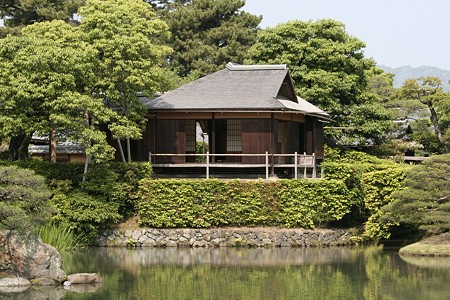
Today's topic is "Fujifabric and the moon" (sorry to pick up a topic out of season again... The moon is thought to be viewed the most beautiful in October in Japan.).
There was the post about "Otsuki-sama Nopperabou"(The Smooth-and-Flat-Faced Moon) and the moon, once before, and today is the sequel of the episode.
Have you ever noticed that the expression of the moon sung in Fujifabric's songs is diverse?
Much more than the songs of the stars.
A picture of the moon was on the sleeve of "a la carte" (mini album), and there are three songs titles including the moon - "Otsuki-sama Nopperabou", "Moonlight" and "The same Moon".
If counting the songs with the lyrics including the word about the moon, there are much more than this.
The full moon in "Gozen Sanji" (3 o'clock in the morning), the waxing and waning moon in "Ukigumo" (Drifting Clouds), a misty moonlit night in "Kanjo Nanagosen" (The Number 7 Ring Road in Tokyo), "the moon falling into a doze in "Uchiage Hanabi" (Aerial display firework), the stagnant moon in "Beyond The Horizon", a quiet calm moon-viewing night in "Maria and Amazoness", the crescent moon up-side-down in "Anthem"...
In the lyrics that Mr. Shimura writes, the moon was used in various ways of expression.
Mr. Masahiko Shimura, as a wonderful songwriter, must be born with an innate ability of sensing beautiful objects in the nature, but since ancient time, Japanese have believed that the moon is one of those natural objects which match Japanese aesthetic.
For the courtiers of ancient Japan, the waxing and waning of the moon was considered to be a symbol of rebirth.

In Japan, there is a famous building which was built for the purpose of moon viewing.
It is Katsura Rikyu.
In the 17th century, the complex was built as a villa for a branch of the Royal Family by the Katsura River, which flows through western Kyoto.
The complex exhibits a refined, understated beauty that makes it a masterpiece of Japanese architecture.
Most traditional Japanese building were designed so that nature could be brought into the interior.
In fact, because many of its rooms were specifically laid out so that they would provide good views of the moon, the whole complex could be described as a large moon-viewing facility. October is the month that the beautiful moon can be viewed in Japan.
First, gaze the moon in Geppa-ro, then once the moon had risen high in the sky, the guests would move to this moon-viewing platform in a different buildings. Reflected in the surface of the pond, the full moon creates an enchanting 'double moon' effect.
Katsura Rikyu really shows the great love of moon-viewing that people in Japan have felt since ancient times.
(A few months ago, a special TV programme about Katsura Rikyu was broadcasted on NHK, so I used some of the texts from that interesting programme as a reference.)
There was a custom of moon-viewing in the eighth month in the lunar calendar since Tang Dynasty in China, and a written document was found stating that some vegetables and fruits were placed facing the moon as an offering. In the Heian Era, the custom was imported to Japan, and at the beginning, it was performed only among aristocrats, but later, commoners started enjoying moon-viewing too, and it rapidly spread out all over Japan.
Even though Japanese people have enjoyed moon-viewing for centuries, the moon was an object to arouse fear, and ancient people avoided to watch the moon before the Heian Era.
In Nihon Shoki, Tsukuyomi-no-Mikoto killed Uke-mochi-no-Kami, and he was shunned by his sister, Amaterasu Oomikami. At the end, they settled in separate dwellings a day and a night away.
There was once a belief that the moon symbolizes the world of immortality (no-aging, no-dying world) - death and rebirth, and existence of 'wochi-mizu' (if you drink this water, you will grow younger) was seriously considered. This is the world of Shintoism in ancient time.

In Hanafuda cards, there is an outstanding card called 'Bozu ni Tsuki' (Full moon with red sky), which gives the highest score among all cards.

How do western people look at the moon?
In UK, children love to sing nursery rhymes and there are some with the moon, but those songs do not particularly praise beauty of the moon.
Tomorrow, let's take a look at the various types of the moon in Fujifabric's songs.
Enjoy listening to Moonlight by Fujifabric!

No comments:
Post a Comment